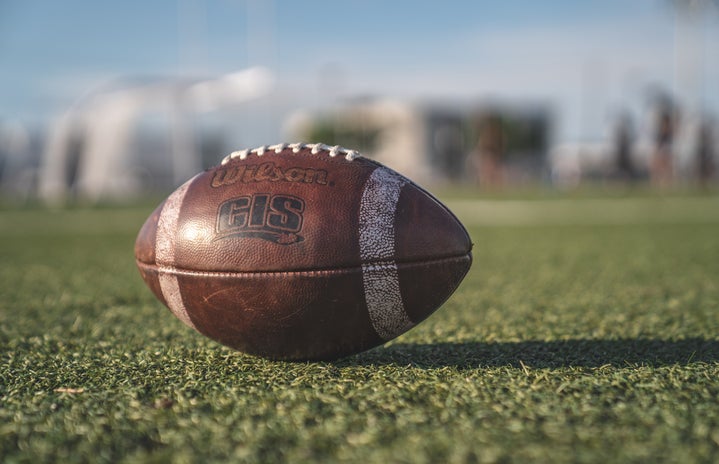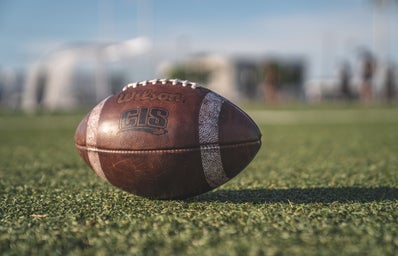We are three weeks into this year’s NFL season and while you may think that the biggest news in football would be the winning teams, you would be wrong. The reigning Super Bowl champion star, Travis Kelce, is not in the news for his good plays this weekend because he scored something else at the game. Singer Taylor Swift, who had a big summer performing at her Era’s tour, was seen at the game with Kelce’s mother, cheering on Kelce after his touchdown. The pair was seen leaving the game and partying together afterward. Even Kansas City’s coach Andy Reid and New England Patriots coach, Bill Belichick, commented on the pair saying Taylor would be “the biggest catch” for Kelce. Now that Swifties have a reason to tune into the games and for any girl that might want to impress with their knowledge of football, here is everything you need to know!
At the beginning of each game, the referees conduct a coin toss, where the away team will select “heads” or “tails.” If they win the toss, they can choose to either receive the ball first or can defer (more common) and start with the ball following halftime. Then the game begins!
Downs
The team that deferred the ball to the second half will kick off to the opposing team, who will begin their downs. In football, a down is basically each try to make it the next 10 yards. After making it 10 yards, the downs reset and the team continues. On TV, the blue line will represent the line of scrimmage (where the offense and defense line up) and the yellow line represents a first down (the line needed to be reached to reset the downs). Each team gets four downs, but after the third, most teams will opt to punt it away because if they don’t make it past the line, the other team gets the ball wherever they stopped. Going for it on fourth down can be risky, and it is dangerous if the team is close to their end zone.
offense & Defense
A football team’s offense is comprised of many positions, but the main one is the quarterback. The quarterback is in charge of advancing the football in any way he can. One way to do this is by throwing the ball to one of his wide receivers, or other eligible lineman. One of the risks of throwing the ball is an interception, which is when the defense on the field can catch the ball instead and will immediately gain possession. Another way is to hand the ball off to the team’s running back who can run it as far as he can without being tackled. Some quarterbacks will also opt to complete a “rush play,” where the quarterback will get the ball and decide to run it himself. Running the ball tends to be a little more safe, but can risk a fumble. A fumble is when the ball is knocked out of a player’s hands after they have had possession, but are not ruled down (knee or elbow on the ground). A fumble recovered by the defense will also result in immediate possession for the other team.
On the other side of the ball, a defense’s main job is to stop the ball from advancing so their team’s offense can come back on the field to score. You will see a defensive (D) line across from the offensive (O) line ready to stop a runner and sack to the quarterback. You will also see a few guys on the side of this line and behind them (in the backfield) to cover the team’s receivers who may be wanting to catch the ball.
Scoring
Now onto scoring. The goal of football is to put points up on the board and most importantly, score more than the other team. There are two (well, actually three) ways a team can score:
The first is a touchdown. To score a touchdown, a team needs to get the ball into the end zone on the far end of the field, which can be done by running or throwing the ball to a member of the offensive line. If a touchdown is scored, six points are awarded to the team. Then, they can choose to kick for one extra point or, if it is a close game, some teams will opt for a two-point conversion. This is a bit harder to get as the team has to set up another play to get past the defense and get the ball in the end zone again. To recap, a touchdown + kick = seven points, and a touchdown + a successful two point conversion = eight points.
The next way for a team to score is from a field goal, which is three points. If a team tries to score, but after three-downs are still a ways away from the end zone or the other team’s defense is playing a stellar game, they can bring their kicker on. Most teams will try for a field goal that is between 30-50 yards, but occasionally, you will see longer kick attempts from 50-60 yards. In order for a field goal to be successful, the kicker must kick the ball between the two yellow goal posts, or it may bounce off the post and in. However, be careful, because some kicks will get blocked by the defense or long kicks may not make it all the way.
The last, but much less common, way a team can score is from a safety. If the defense tackles the quarterback (also known as a sac) into their end zone, this is a safety, and the defense scores two points for their team. This can happen when the ball is punted perfectly and the offense must start very close to their end zone. While it is much less common than a field goal or touchdown, it is seen occasionally.
penalties
There are many possible penalties in football, but I am going to just cover a few that are seen more often. Referees will throw a yellow flag on the field to indicate a penalty.
False Start: When the offense and defense are lined up on the line of scrimmage, they are not allowed to cross that line until the ball is snapped (given to the quarterback). When an offensive lineman crosses this line early, it is a false start. This is a five yard penalty and results in the offense being pushed back five yards, which is added onto the line to gain to reset the downs. So if a team is on second and six, but gets a false start, it will now become second and eleven.
Neutral Zone Infraction: On the other side of a false start, if a defensive player moves before the ball is snapped, it will result in a neutral zone infraction. This is once again, a five yard penalty, but it pushes the opposing team’s offense forward five yards rather than back.
Pass Interference: This one is a big penalty. Pass interference occurs when a defensive player impedes the ability of a receiver to make a catch. This can happen if the defensive player trips, pushes, or cuts in front of the receiver, which prevents a fair catch from being made. A defensive pass interference results in the ball being placed at the spot of the foul. If it was a long catch attempt with pass interference, the offense would be able to move up tremendously. Offensive pass interference can also take place when an offensive player pushes off the defensive guard and prevents them from also catching the ball or making a fair tackle. If it is an offensive pass interference, this results in a loss of 10 yards for the offense.
Holding: Holding is probably the penalty I see most often. This occurs when a player either on the offense or defense tackles or holds a player other than the ball carrier, preventing a fair tackle. Holding on the defense is a five yard penalty and automatically awards the offense a first down. Offensive holding is a 10 yard penalty, so they get pushed back 10 yards.
enjoy the game!
While I’m sure there is much more to teach about football, this guide should help you for the next big game! Whether you’re watching with your family, your partner, or just to see Taylor Swift’s possible new boyfriend, these football basics will get you through the game and will surely impress those around you! Oh, and in case you didn’t hear, be sure to tune into the Super Bowl this year for a halftime show by Usher!


